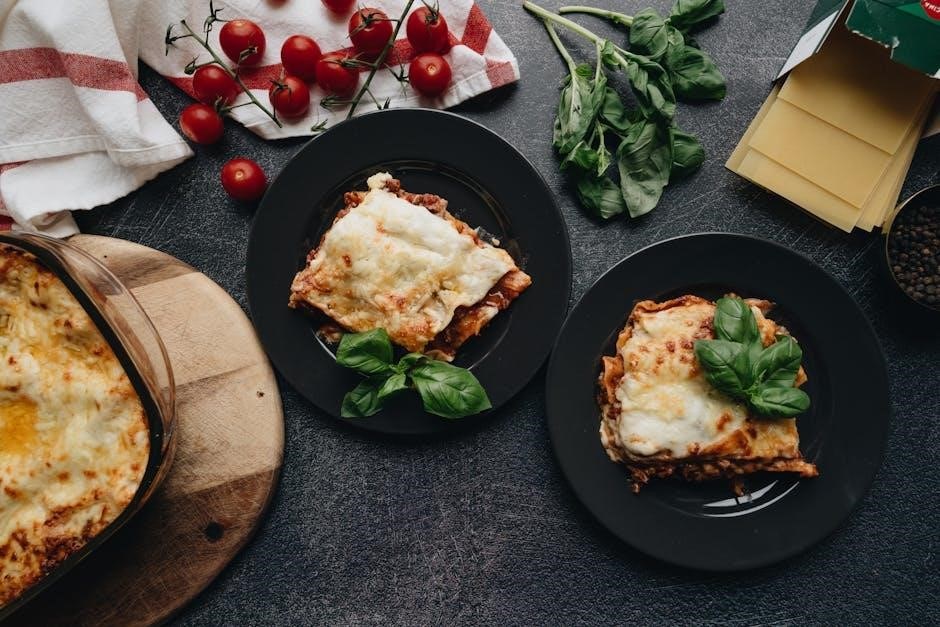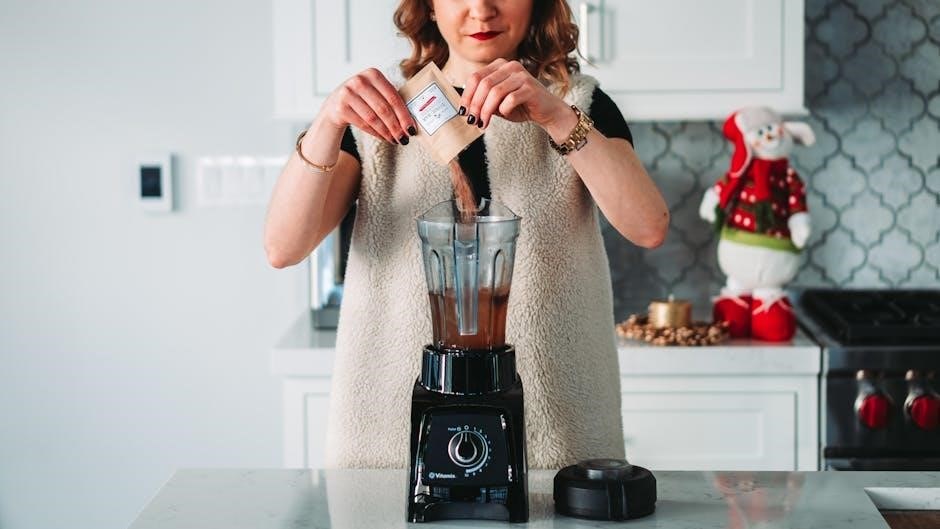Stouffer lasagna cooking instructions are available online for convenient reference and guidance purposes always needed
Overview of Cooking Methods
There are various cooking methods for Stouffer lasagna‚ including conventional oven and alternative methods.
The conventional oven method is the most common and recommended way to cook Stouffer lasagna.
This method involves preheating the oven to a specific temperature and cooking the lasagna for a certain amount of time.
Alternative cooking methods may include using a microwave or toaster oven‚ but these methods are not always recommended.
The cooking method used can affect the quality and safety of the lasagna‚ so it is important to follow the recommended instructions.
By understanding the different cooking methods‚ individuals can choose the best way to prepare their Stouffer lasagna.
This can help to ensure that the lasagna is cooked thoroughly and safely‚ and that it turns out delicious and satisfying.
Overall‚ the cooking method used is an important consideration when preparing Stouffer lasagna.
Conventional Oven Instructions
Cooking Stouffer lasagna in a conventional oven requires preheating to 375F always
Preheating and Preparation
To start cooking Stouffer lasagna‚ preheating the oven to the recommended temperature is essential‚ and it is crucial to follow the instructions carefully.
The oven should be preheated to 375F‚ and the lasagna should be placed on a baking sheet in the center of the oven.
Preparation involves removing the lasagna from its packaging and placing it in a suitable baking dish‚ covering it with aluminum foil to prevent drying out.
This step is critical to ensure the lasagna cooks evenly and retains its moisture‚ and it is necessary to follow the instructions to achieve the best results.
Proper preheating and preparation will help to cook the lasagna thoroughly and prevent any food safety issues‚ and it is always a good idea to double-check the instructions before cooking.
The preheating and preparation process is simple and straightforward‚ and it requires attention to detail to ensure the best results.

Cooking Instructions for Stouffer Lasagna
Cooking instructions for Stouffer lasagna are provided for safe food handling always
Importance of Retaining Moisture
Retaining moisture is crucial when cooking Stouffer lasagna to ensure the dish remains flavorful and tender.
The plastic film covering the lasagna tray helps to retain moisture and prevent drying out.
This is especially important when cooking in the oven‚ as high temperatures can cause the lasagna to dry out quickly.
By keeping the plastic film intact‚ the lasagna will cook more evenly and retain its natural flavors.
Additionally‚ covering the lasagna with aluminum foil during cooking can also help to retain moisture and prevent the top from burning.
This simple step can make a big difference in the final result‚ resulting in a delicious and satisfying meal.
Proper cooking techniques and attention to detail are essential for achieving the best results when cooking Stouffer lasagna.

Alternative Cooking Methods
Stouffer lasagna can be cooked using alternative methods for convenience always
Preventing the Dish from Drying Out
To prevent the dish from drying out‚ it is recommended to cover the lasagna with aluminum foil during cooking‚ this helps retain moisture and ensures the dish remains flavorful and tender. The foil should be removed for a short period to allow the top layer to brown slightly‚ adding texture and visual appeal. It is also important to follow the recommended cooking time and temperature to prevent overcooking‚ which can lead to a dry and unappetizing dish. By taking these precautions‚ you can enjoy a delicious and satisfying Stouffer lasagna that is full of flavor and moisture‚ making it a great option for a quick and easy meal. Proper cooking techniques are essential to achieving the best results.
Preparing Stouffer Lasagna for Cooking
Remove packaging and place lasagna in oven-safe dish always before cooking begins now
Covering with Aluminum Foil
To prevent the top of the lasagna from burning‚ it is recommended to cover it with aluminum foil during cooking‚ this helps retain moisture and heat evenly.
The aluminum foil should be placed over the lasagna before it is put in the oven‚ and it should be removed for the last few minutes of cooking to allow the top to brown.
This method is especially important when cooking the lasagna in a conventional oven‚ as it helps to prevent the top from drying out and ensures that the lasagna is cooked thoroughly and evenly.
By covering the lasagna with aluminum foil‚ you can help to ensure that it is cooked to perfection and that it retains its flavor and texture‚ making it a delicious and satisfying meal for you and your family to enjoy.

Food Safety and Quality Guidelines
Follow cooking instructions to ensure product reaches internal temperature of 165F always for safety
Internal Temperature Requirements
To ensure food safety and quality‚ it is essential to cook Stouffer lasagna to an internal temperature of 165F‚ this can be checked using a food thermometer‚ the temperature should be checked in the center of the lasagna‚ where it is usually the coolest‚ cooking to this temperature will kill any bacteria that may be present‚ and prevent foodborne illness‚ it is also important to note that the temperature should be checked after the lasagna has been cooked for the recommended time‚ and before it is served‚ this will ensure that the lasagna is safe to eat‚ and that it has been cooked to a high enough temperature to prevent any food safety issues‚ by following these guidelines‚ you can enjoy a delicious and safe meal.

Cooking Times and Temperatures
Cooking times and temperatures vary depending on oven type always needed for perfect cooking results
Adjusting Cooking Heat and Times
To ensure perfect cooking results‚ adjusting cooking heat and times may be necessary due to variations in oven performance and temperature control systems in place.
Cooking heat and times can be adjusted based on personal preference for a more tender or crispy texture‚ and to prevent overcooking or undercooking the lasagna.
It is essential to follow the recommended cooking instructions and guidelines provided by the manufacturer to achieve the best results and ensure food safety and quality standards are met always.


